Some Favorite Toys for Infants and Toddlers
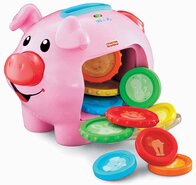
Piggy Bank: This toy has cause and effect concepts, is good to work on making requests (for more coins or certain coins, to open/close the door, music on/off, etc.), building basic concept knowledge (animals, animal sounds, open/close, in/out, on/off, more/all done, etc) and following basic directions. This is a simple, fun toy that also has great potential to help encourage your child’s language development.
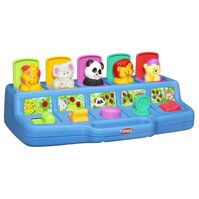
Animal Pop-Up Toy (The Speech Space likes this option or this option). Pop up toys can be used to help work on cause-effect and once your child is a toddler, this toy can also be used for working on problem solving skills (i.e., figuring out how to open each box/make the animals pop up, how to close the boxes/animals). To work on your child’s receptive language skills, you can give your child directions for which animal to pop-up (e.g., “Open the elephant”; “Where is monkey?”). To work on your child’s expressive language skills, you can work on naming the animals and making the animal noises.
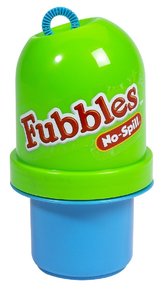
Bubbles: We love the brand Fubbles, as they have the No-Spill containers (amazing!). We have yet to run across a child who does not become fascinated, engaged or super silly when playing with bubbles. When playing with bubbles with your young child you can work on making requests (for more bubbles, for turns, holding the container, using the wand, etc) and functional vocabulary during bubble play (e.g., more, bubble(s), pop, my turn, up, down, in, out, dip, all done). An additional bonus is when your child works on blowing bubbles they are working on their oral motor skills– check out our blog post here to see why this is so important!
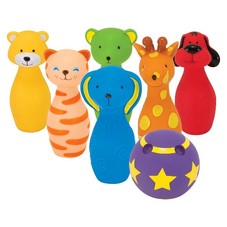
Bowling: Toy bowling sets can be inexpensive and fun for the younger crowd. We like to use them with our early talkers as a way to really encourage using language during play. While setting up the pins you can use functional words (e.g., “Up-up-up” for each pin), name the pins (e.g., animals), or even name the colors or count the pins as your child gets older. Have your child tell WHO and WHAT they should do (“I roll the ball” or “You roll the ball”, etc.), or HOW you should roll it (“Through my legs” or “Under the table”, etc). After they’ve rolled the ball, talk about what happened to the pins, using quantitative concepts like “all” or “one” (e.g., “One fell down!” or “They all fell down!”).
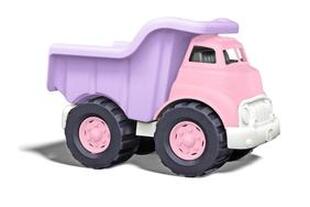
Green Toys Trucks: We love Green Toys vehicles! They are made of recyclable material and are very sturdy. These vehicles are great for young kiddos that are about to be or already on the move. If you get the dump truck or recycling truck you and your child could play putting things in the trucks and then dumping them out (over and over again). You can even work on following directions and vocabulary by telling your child which items to put in the trucks. If they are older, your child could tell you what to help put in the trucks.
If you have questions or concerns about your child’s s development, contact us at The Speech Space. We offer free screenings, which take approximately 30 minutes, and can help identify potential problems.
